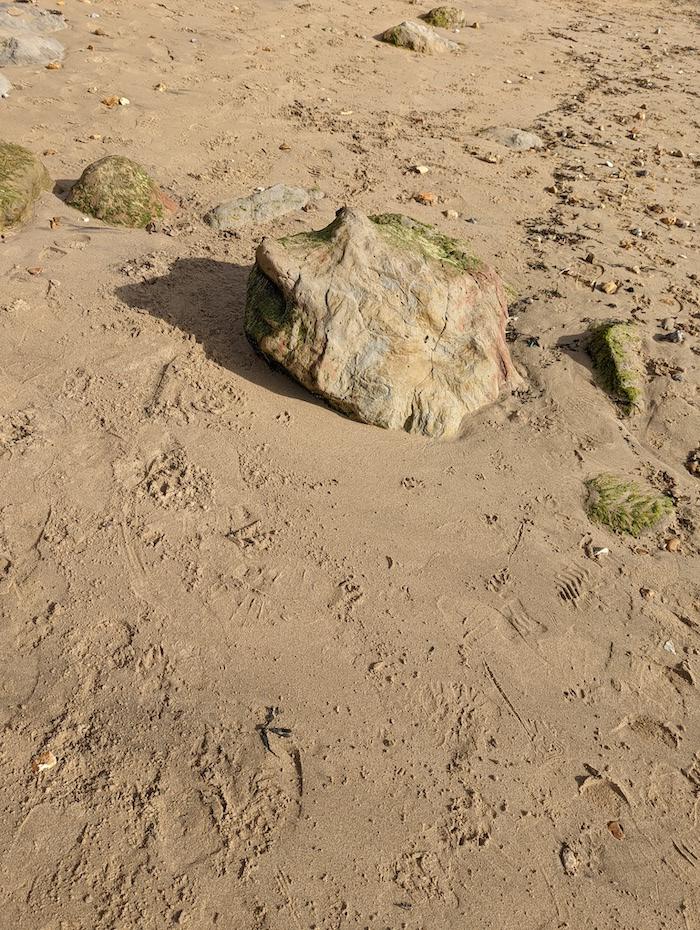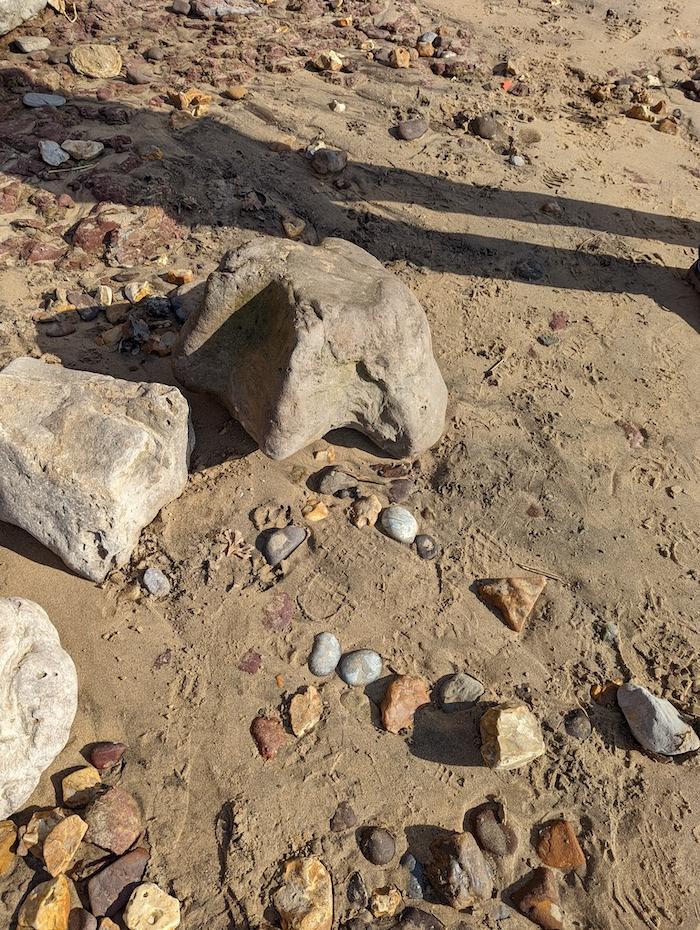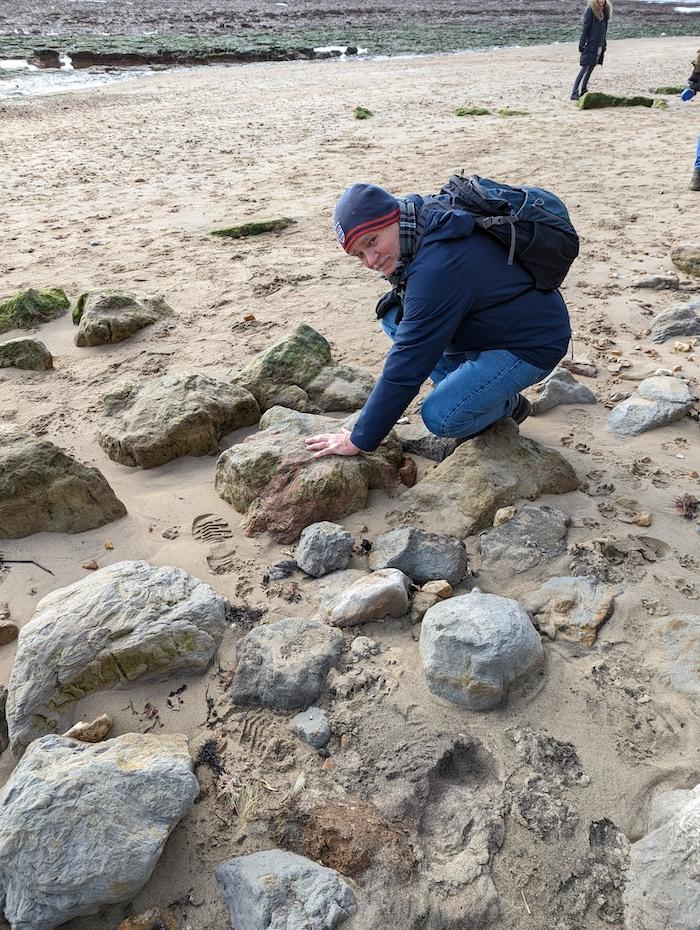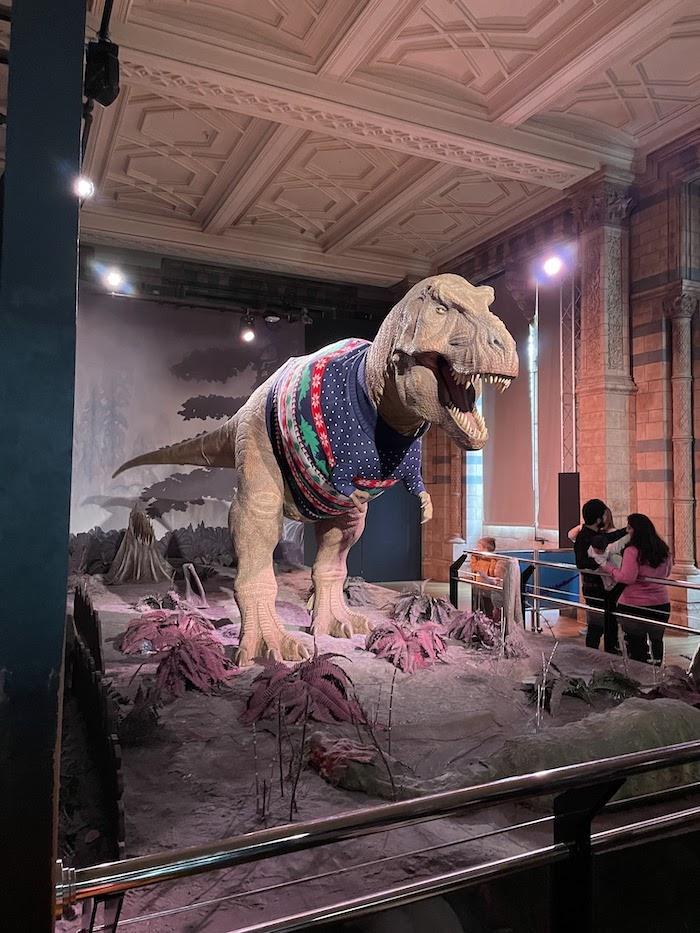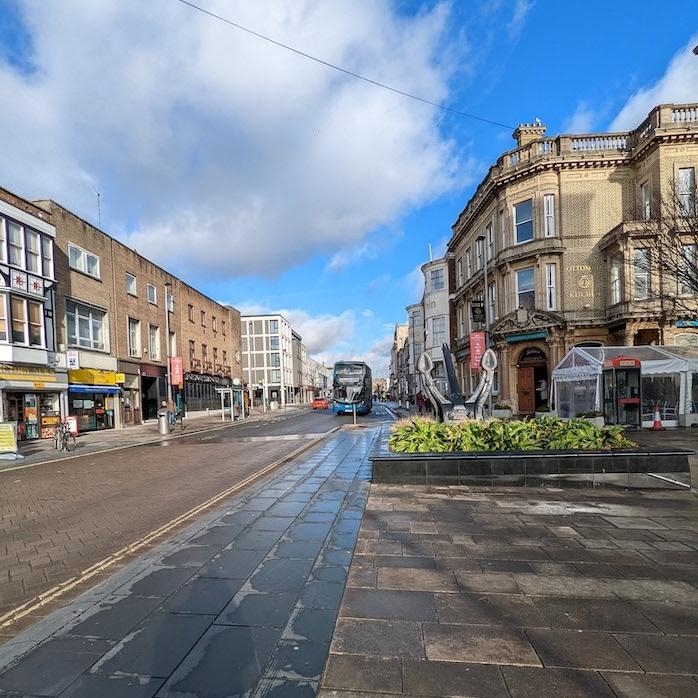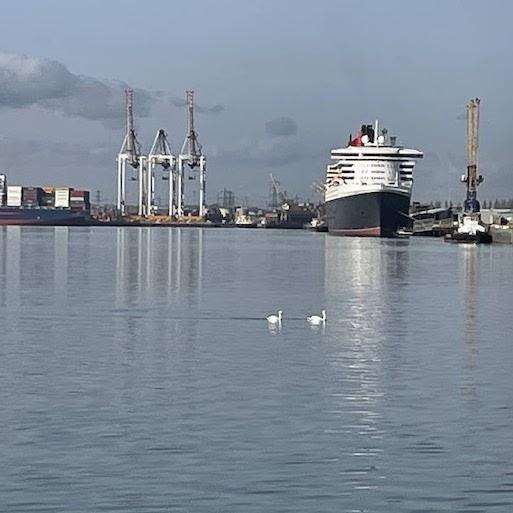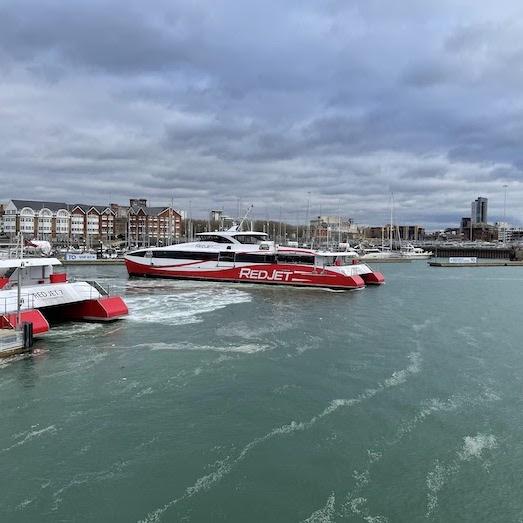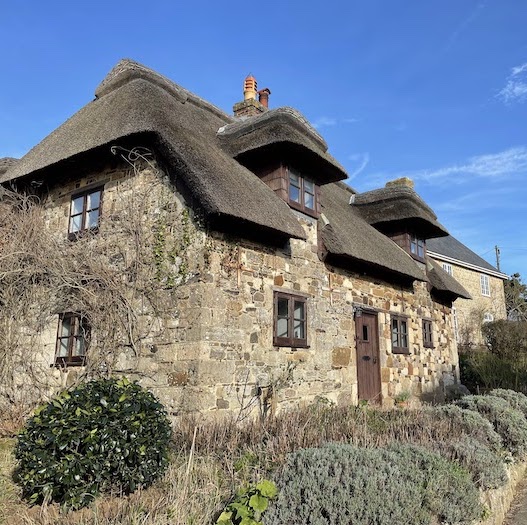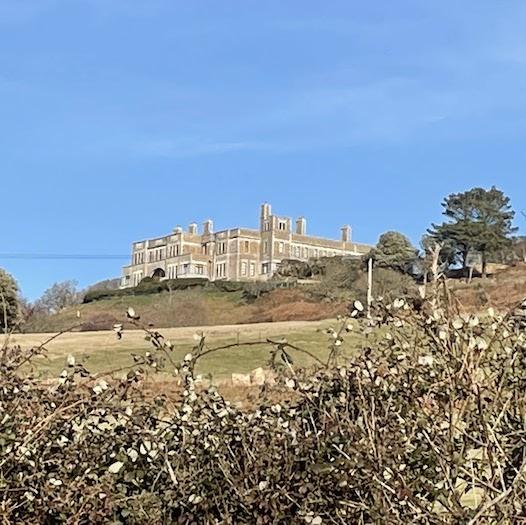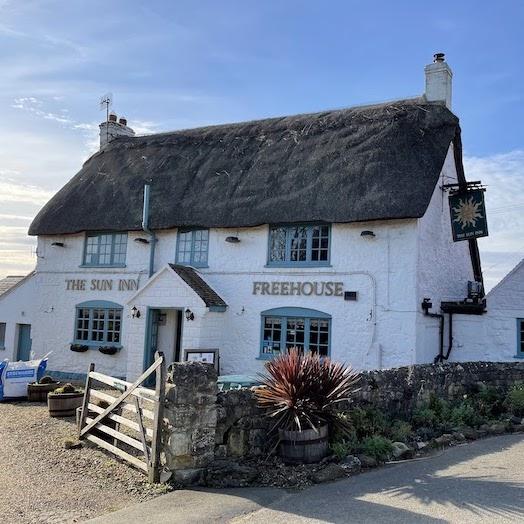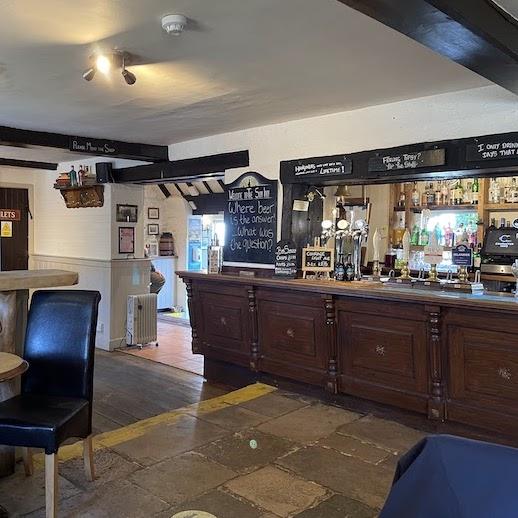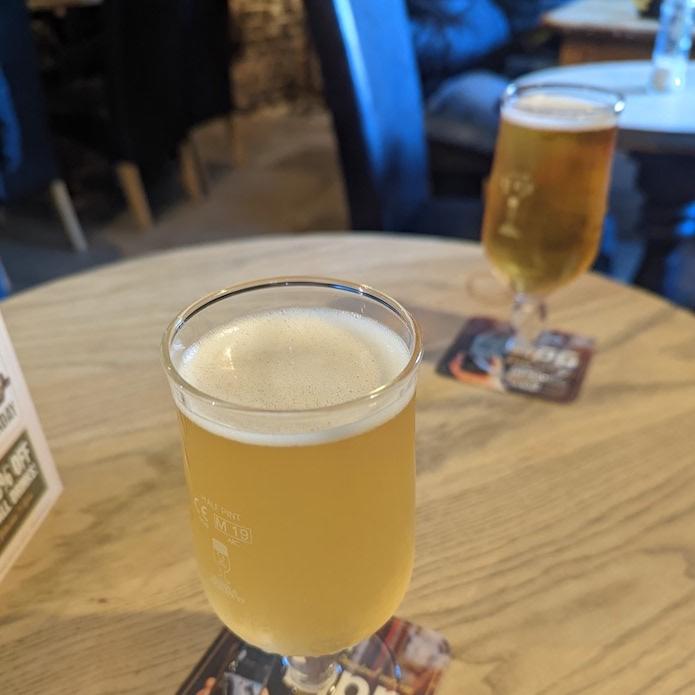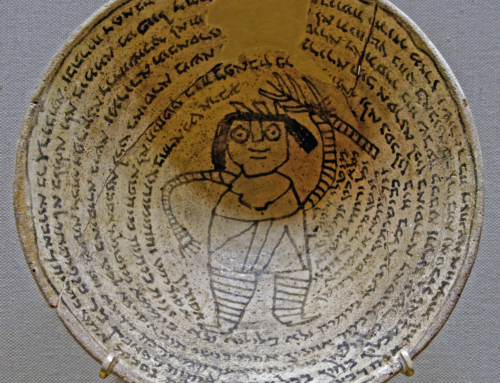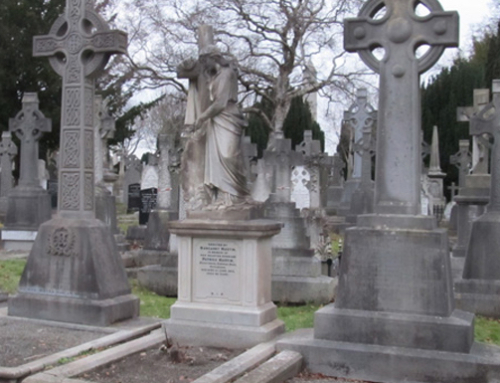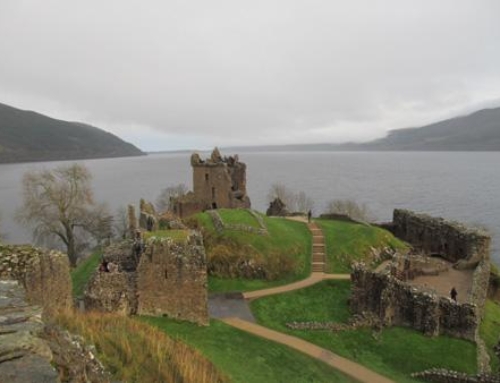We visit Compton Bay on the Isle of Wight on a bright and brisk day in February, about 125 million years after the dinosaur, whose bone I now cradle in my hand. As I turn it over, I see veins of brassy gold and a few boxy crystals. I recognize it as pyrite, a mineral often called “Fool’s Gold.”
I carefully slide it into my backpack and keep strolling the rocky coast of Compton Bay, my eyes scanning from left to right. I search for the famous dinosaur footprints on the sandstone ledge at Hanover Point. I soon find billowy gray casts exposed by the low tide. Cartoon-like, three enormous Iguanodon toes emerge from the sand. Then three more. The tracks march across the beach.
How did such massive dinosaurs end up on a small island off the southern tip of England?
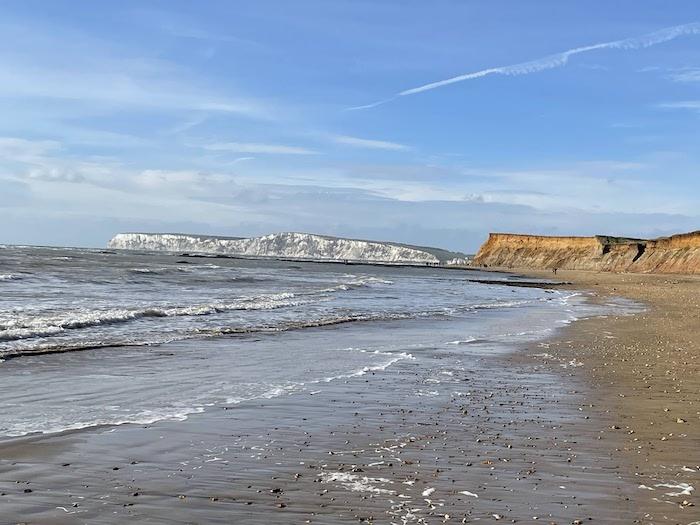
Sunny days are rare in the UK, but this February morning is bright and beautiful at Compton Bay on the Isle of Wight. The white chalk cliffs of Freshwater rise in the distance. – Photo by Robin Van Auken
When you stroll the beach on the Isle of Wight and the light bounces off a dark shiny object above the tidal line, chances are it is a fossil, not a shell. Pick it up.
It could be from a spinosaur, the largest carnivorous predator to hunt the landmass that eventually became Europe. According to the Natural History Museum in London, the Isle’s spinosaurs are possibly 10-plus meters long – nearly 33 feet long!
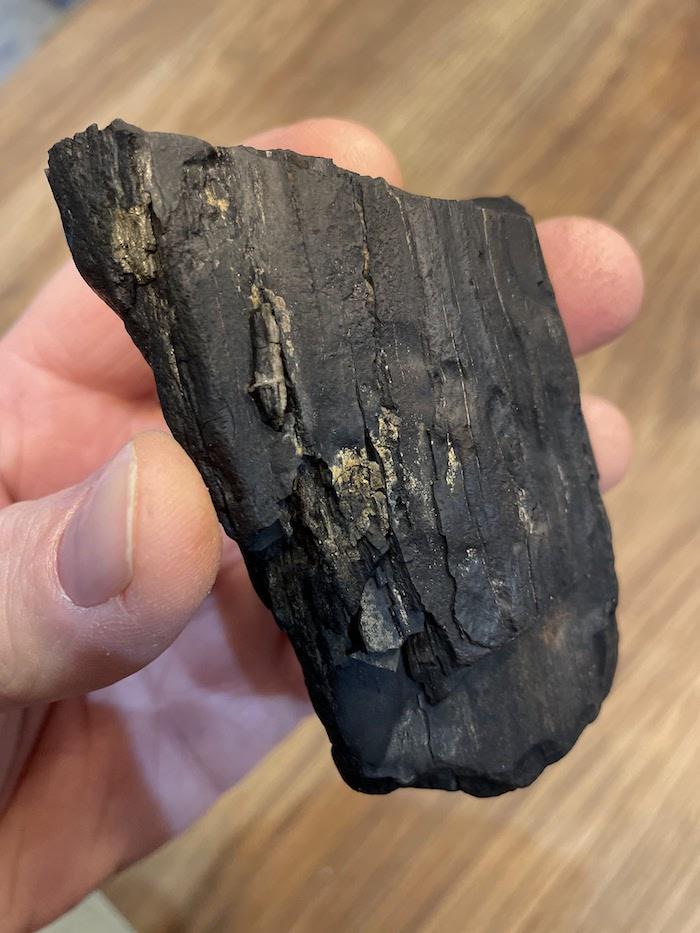
Finding authentic dinosaur fossils is easy and thrilling at Compton Bay on the Isle of Wight. Here, the author examines a 125 million-year-old bone. – Photo by Robin Van Auken
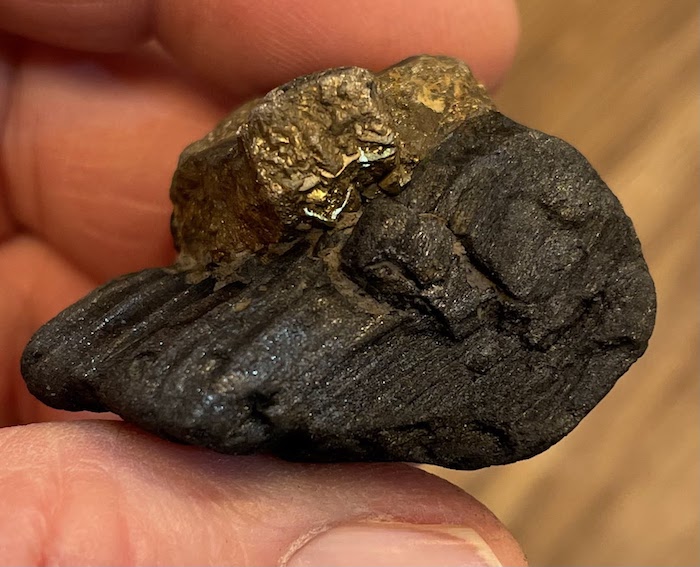
Pyrite is a brassy gold mineral that fills in the crevices of a bone as it turns from organic material to a stony fossil. This process is possible because the animal died in a swampy, low-oxygen location, or a flash flood covered its skeletal remains. – Photo by Robin Van Auken
Land Before Time
Scientists discovered more than 20 species of dinosaurs on the Isle of Wight in a layer of sediment called the Vectis Formation. They lived in a subtropical environment. Good for us because those conditions are the best conditions to form fossils.
The dinosaur bones were preserved because they were buried in stagnant ponds with low oxygen. The chemical processes that occur when minerals replace the organic matter create the fossil. During this time, pyrite fills the gaps in the bone. Fine pyrite makes it appear black, while larger pyrite emerges as gold streaks and cubes.
This time is known as the Cretaceous geological period, lasting from about 145 to 66 million years ago. It was during the Cretaceous (not the Jurassic) that the Tyrannosaurus rex arose. Then, over 85 million years ago, T Rex thrived as a top land predator. Now, we see them brought to animatronic life in museums, wearing colorful jumpers (sweaters) at Christmas.
Eventually, our backpacks are heavy, and we’re satisfied with the hours we spent strolling the two miles of Compton Beach. In the distance, the white chalk cliffs at Freshwater reflect the sun’s low angle, and we climb back to the road to catch our bus.
It’s been an exciting day for amateur paleontologists!
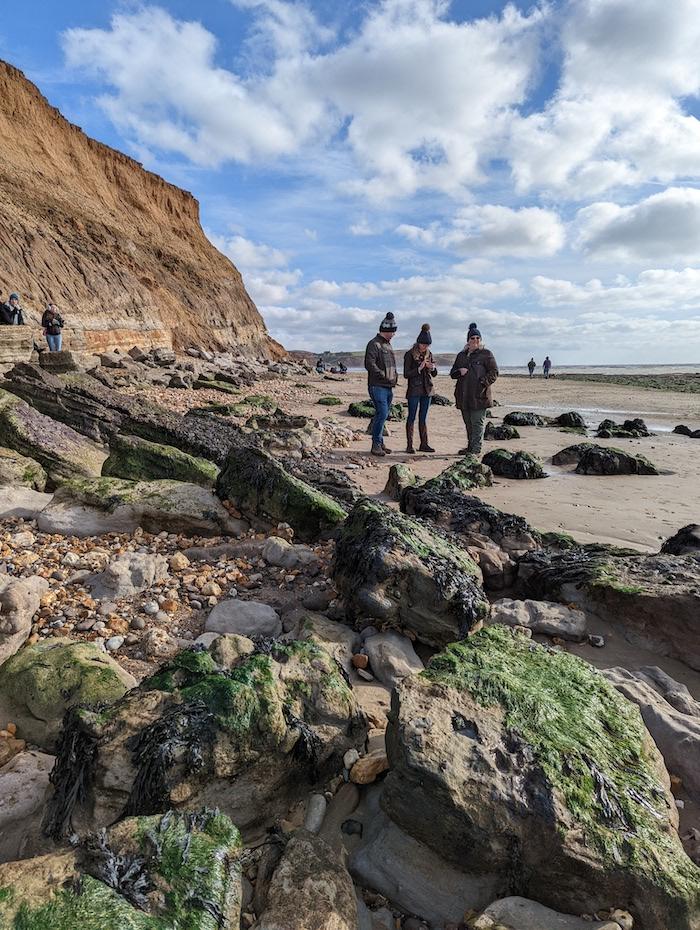
Visitors to Compton Bay not only visit for the fossils but they search for the Iguanodon footprints left behind. These large, three-toed casts are visible at low tide along Hanover Point. – Photo by Robin Van Auken
Can you spot the Iguanodon footprint along the foreshore at Compton Bay? The National Trust protects them, and the removal is forbidden at Compton Bay, although smaller fossils scattered nearby are free to take. Iguanodon was the largest, best known, and most widespread of all the iguanodontids and is related to the hadrosaurs, or duck-billed dinosaurs. They averaged 30 feet long and weighed four to five tons. The formidable T-Rex doesn’t appear as fearsome in its holiday jumper. The animatronic dinosaur is part of the Natural History Museum display. – Photo by Robin Van Auken

Amazing finds! The author shares her collection of dinosaurs and other animal fossils found at Compton Bay, Isle of Wight. – Photo by Robin Van Auken
Day Tripping to the Isle of Wight
The trip to the island concludes a three-month-long sojourn in England. We’ve traveled to Southhampton, waiting to board the Queen Mary 2 for a trans-Atlantic journey to New York.
Southampton, an eclectic city that rebuilt and reinvented itself after the horrific bombing in World War II, is a story for another day. Today, we’re catching the Red Jet to the Isle of Wight.
It’s a short walk to the high-speed ferry terminal, but the cold wind buffets me, whipping my scarf behind me and bringing tears to my eyes. Once we arrive, we purchase “Day Return” tickets for same-day trips to and from West Cowes. These are about £32 ($40). With our passes in our pockets, we order hot chocolate and await the boat’s arrival. Finally, we trundle aboard for a 30-minute trip across the Solent.
Our ferry is Red Jet 6, the company’s largest high-speed catamaran with a capacity of 275 passengers and four crew. Some passengers bring bicycles with them, some have baby strollers, but most are on foot, like us. Quite a few have their dogs on leashes. The people of the UK love their dogs and take them nearly everywhere.
The Red Funnel company provides a designated pet lounge with water bowls on several ferries. Dogs are always welcome on the outer passenger decks. If you’re traveling with a pet and want to visit the “Isle of Woof,” look at this information from Red Funnel about pet-friendly sites.
Southampton was the departure point for the RMS Titanic. The Cunard Line maintains a regular transatlantic service to New York from the city, and the Queen Mary 2 awaits in the distance. Red Funnel ferries transport people (and their vehicles) to and from the Isle of Wight daily. Each year, it carries 3.4 million passengers. With 35 ferries from Southampton to the Isle of Wight daily, foot passengers appreciate fewer than 30 minutes of crossing time. Vehicle ferry crossing times average 60 minutes. – Photo by Robin Van Auken
Only some people who travel to the Isle of Wight are heading to Compton Bay, as we were. It’s a popular holiday destination with 57 miles of coastline, 20 beaches, and an array of protected woodland and nature reserves. There are more than 50 attractions and places to visit. If you think a visit might be upcoming, you can check Red Funnel’s guide and save up to 25% of your travel costs.
Because we are day-trippers, we follow the well-marked path to the local bus station and await our next mode of transportation. We’ve discovered that Google Maps is an outstanding resource, even better than official-UK transportation apps that the locals use. In addition, Google gives us detailed information about public transportation when we’re abroad, so we don’t have to worry about cultural miscues or time differences.
We have a while before the next bus to Compton Bay, so we grab a breakfast sandwich and coffee. I should have skipped the coffee. There are no facilities at Compton Bay. During the tourist season, there are food vendors but no bathrooms. After arriving at the beach and walking around for a couple of hours looking for dinosaur fossils, the inevitable occurs. You need a restroom, but none are available for a couple of miles. If you’re an intrepid traveler, you can find a suitable niche in the multi-colored cliffs along the beach. No worries – high tide happens twice a day.
After our day of collecting fossils, we head back to the main road and the bus stop. We have two choices: We can catch a bus back to West Cowes and find a lovely restaurant for dinner before catching the return ferry, or we can walk a couple of miles along the narrow country road to the Sun Inn, a 16th-century thatched free house pub, and order a pint. (In Britain, a free house is a pub not owned by a particular company and can sell whatever beers it chooses.) There’s a second bus stop near the pub.
The road is narrow, and the shoulders are muddy when we have to move for the occasional passing car, but it is scenic. We see quaint cottages and mansions on the hill. We meet sheep who rush to the gate to greet us. Finally, we arrive at the pub, staffed by a calm Golden Retriever, and enjoy a lager. We would love to spend more time here, perhaps even have dinner, but we opt to catch the bus back to West Cowes while the sun is still shining.
Soon we are back at the ferry port and sail back to Southampton, where the choice of restaurants is enormous. But that, also, is another story.
Curious sheep rush to the gate to greet us as we wander down a country lane on the Isle of Wight. Along the route, we notice a traditional thatched roof cottage, a rare sight in the United Kingdom because of the upkeep cost. Fewer people can afford mansions in the United Kingdom, but at least the roof is solid stone. We soon arrive at the Sun Inn, a free-house pub built during the 16th century. It is a simple space with cold draughts on tap, a beer garden, and dining areas with outstanding views of the rolling countryside and Tennyson Down. Dogs are welcome everywhere in the United Kingdom, and we are greeted by a friendly Golden Retriever resting on the cool, centuries-old flagstones of the Sun Inn. After a day collecting dinosaur fossils on the Isle of Wight, a refreshing pint of beer hits the spot. Unfortunately, keeping on schedule means we can only have a couple of pints before catching the ferry back to Southampton. – Photo by Robin Van Auken
Ready for a Challenge?
Have even more fun when you accept the 21-Day Writing Sprint Challenge. This process is one I use every semester with my college students, so I know it can kickstart your creativity and introduce structure to your writing schedule. When you join my Circle of Writers & Authors, you’ll receive FREE writing resources, and you’ll sign up for my newsletter. I will not sell your information, or spam you. I will send you updates about new articles and podcasts I’ve created, and projects I’m working on. You can unsubscribe at anytime. Read my Privacy Policy here.
Wholehearted Author is for you if you are …
- Starting out as a writer and could use some guidance
- Wanting to be inspired to create and publish your book
- Looking for like-minded, happy people and helpful mentors
- Hoping to turn your writing into a full-time, awesome career
- New to the concept of “permission marketing” but willing to try
CATCH THE WEST WIND
Add WEST WIND to your library!
If you love a good mystery, a romantic whodunit that will surprise you, then WEST WIND is a great addition to your ebook library.
West Wind is my third novel as an author of Contemporary Fiction, Suspense, Thriller, and Romance. It’s FREE too, when you join my exclusive Readers Group. Join today and download your free book, and as a special thank you, you’ll receive a SECOND FREE BOOK tomorrow! The giving goes on and on when you become my fan.
When you join my Readers Group, you’ll receive updates about new projects I’m working on. You can unsubscribe at anytime. Read my Privacy Policy here.


